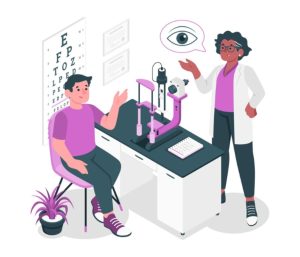Teaching Receptive Skills To The ESL Learners- Things You Should Know
Our life is largely taken up with receiving information from external sources. Most of this information enters our consciousness via our eyes and ears. The reading and listening-based ESL lessons require a variety of teaching strategies and activities.
A TEFL certificate can equip you with the skills required to teach non-native English speakers. A TEFL certification will help you know the ways to develop a lesson plan for the development of receptive skills. In the English language, students have to master the four fundamental skills.
All these four skills are equally essential. Any professional TEFL-certified teacher will include them in every lesson. Receptive skills refer to reading and writing. On the other hand, the writing and speaking skills are referred to as productive skills.
The Differences Between Listening and Reading
The teaching processes involved in listening and reading are pretty similar. However, the contexts in which they occur are different. Non-native English students can read at their own pace. They can also increase the reading speed based on the task. However, listening happens in real-time.
Mostly the listener doesn’t have the option to slowdown the speaker. Readers can re-read a section when they can’t understand the text correctly. On the contrary, the spoken word disappears into thin air as soon as it’s uttered. To make the ESL lessons interactive for your students, you should be aware of these differences.
Aspects to Consider While Teaching Receptive Skills
Through receptive skills, learners can properly comprehend written and spoken teaching practices. That’s why the teacher has to avoid focusing only on the student’s performance in understanding the text’s meaning.
Instead, you should train them to develop their reading and listening skills to help them evolve as fluent communicators. You should note that people listen or read for a purpose. You can introduce interesting activities that can improve the receptive skills of the students.
By nature, receptive skills are not passive. Readers and listeners use cognitive processing while reading and listening. While processing a particular text, two of the essential brain activities are bottom-up and top-down.
What is Top-Down Processing?
The top-down activities can motivate the learners to get a general and brief view of the passage. Here are some examples of top-down processing activities that may come in handy.
- The use of pictures to help students guess the topic
- Arranging a series of pictures or sequence of events in the correct order
- Providing different images to be matched with different sections
- Asking the students to listen to conversations to derive information
Bottom-Up Processing
The bottom-up processing activities typically comprise phrases, sentences, and words. The primary role of these activities is to guide students to develop a better meaning of the text. Following are the bottom-up processing activities to know.
- Identifying the tense of verbs
- Recognizing synonyms or antonyms of a set of words
- Identify linking words
- Asking students to detect the order of a collection of words in the discourse
Set Objectives for the ESL Class
To make teaching effective, you should set objectives for the ESL class. For instance, try to determine what the learners will gain with reading and listening activities. Develop the lesson plan based on the class-specific goals. Professional and experienced TEFL-certified teachers will always ensure that learners read and understand the phrases and vocabulary.
Focus on Teaching your Students Essential Vocabulary
In an ESL class, it is normal for your students to face difficulty while understanding the meaning of words. But to understand the teaching material, learners should know proper vocabulary. You should aim to teach vocabulary items that are crucial for answering basic questions.
Most ESL teachers also teach unusual words that appear numerous times. However, always remember that it’s not a vocabulary class. So, your main objective should always be to develop passive knowledge.
Reading and Listening for General Understanding
To develop the receptive skills of your students, create a small set of questions. Prepare questions in a manner that they are able to assess the general understanding of learners. The best way to develop listening skills is by playing a recording once. You can ask relevant questions based on the recording to know about the understanding level of the students.
Assign Specific Tasks
You shouldn’t use the comprehension tasks to check the learner’s understanding of the text simply. As an ESL teacher, you should promote understanding by challenging the students with interesting activities. For instance, you can utilize a patchwork ESA lesson to test the receptive skills of your students. Note that the ESA lesson is suitable for students with abilities B1/B2.
The key to developing receptive skills in non-native English speakers is by exposing them to authentic teaching materials. You can now acquire the necessary ESL teaching skills with a TEFL certification from TEFL-TESOL-Certification.com. After receiving the certificate, you can apply to more than 30,000 vacancies with the help of this platform.





